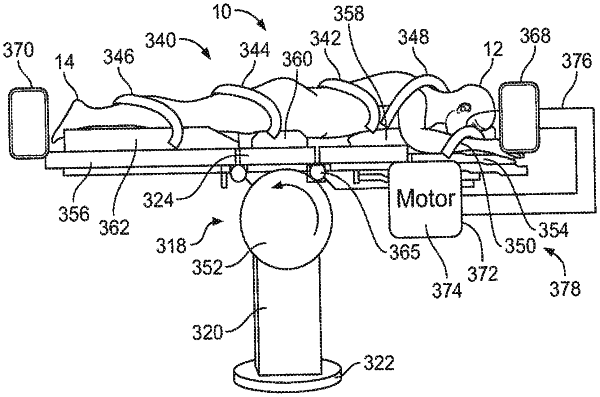| CPC A61G 13/0054 (2016.11) [A61G 13/04 (2013.01); A61G 13/08 (2013.01); A61G 13/12 (2013.01); A61G 15/02 (2013.01); A61H 1/0222 (2013.01); A61H 1/0229 (2013.01); A61H 1/0292 (2013.01); A61H 2201/0192 (2013.01); A61H 2201/1207 (2013.01); A61H 2201/1604 (2013.01); A61H 2201/1609 (2013.01); A61H 2201/1623 (2013.01); A61H 2201/1628 (2013.01); A61H 2201/1635 (2013.01); A61H 2201/164 (2013.01); A61H 2201/1652 (2013.01); A61H 2201/1671 (2013.01); A61H 2203/0412 (2013.01); A61H 2203/0487 (2013.01)] | 20 Claims |

|
1. A method for performing a surgical procedure, the method comprising:
positioning a patient in a surgical patient interface device, the surgical patient interface device comprising:
a base,
a platform coupled to the base and including first and second ends, and
a first abutment and a second abutment each coupled to the platform;
rotating the platform between a first position and a second position, wherein, in the first position, the platform extends between the first and second ends in a substantially horizontal direction relative to the base, and the first and second abutments are separated by a first distance along the substantially horizontal direction, and wherein, in the second position, the platform extends in a substantially vertical direction relative to the base such that a torso of the patient extends in the substantially vertical direction;
adjusting one or both of the first and second abutments relative to the platform so that, in the second position, the first and second abutments are separated by a second distance along the substantially vertical direction, the second distance being different from the first distance; and
accessing a target portion of skin of the patient for the surgical procedure.
|